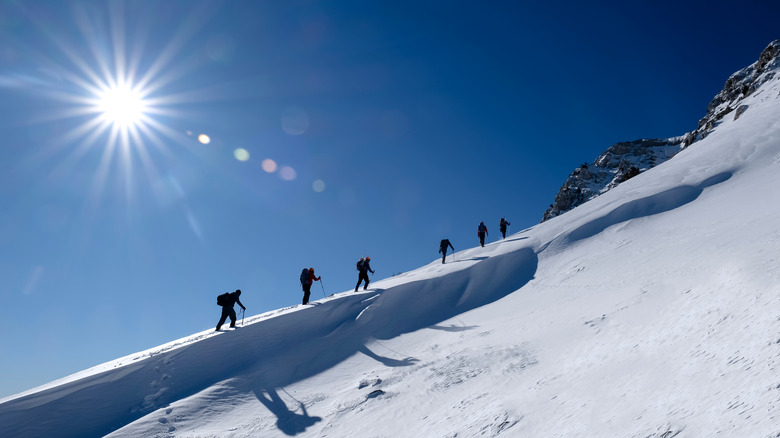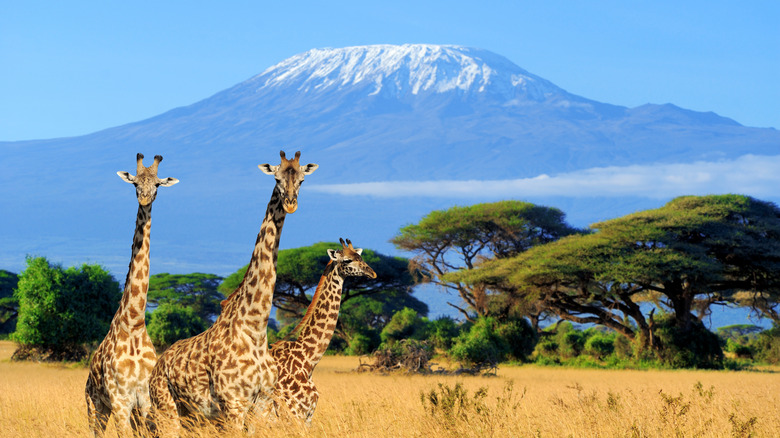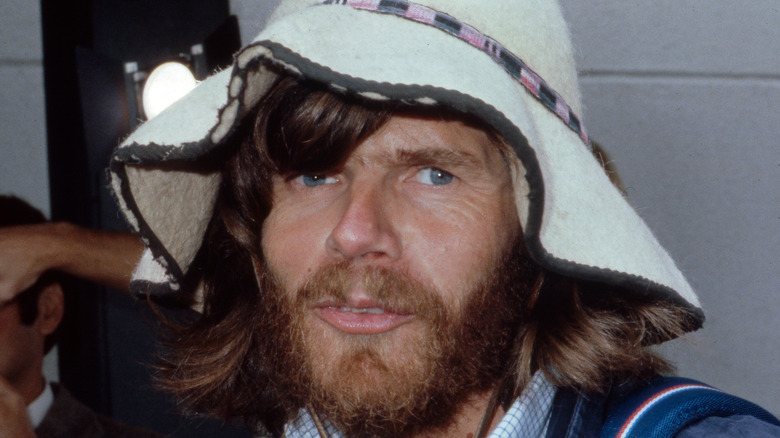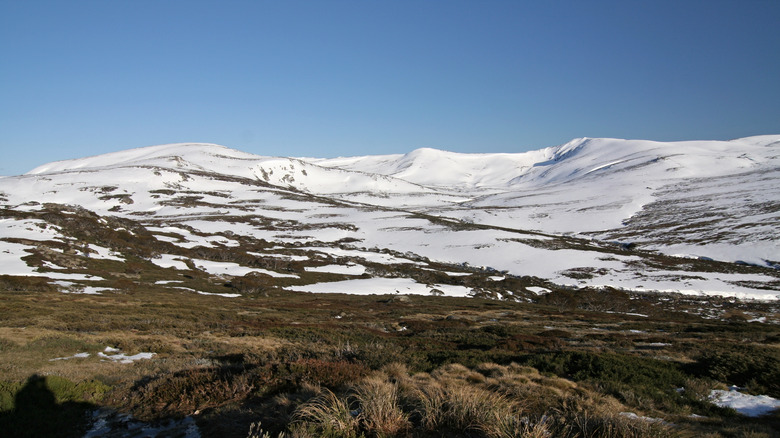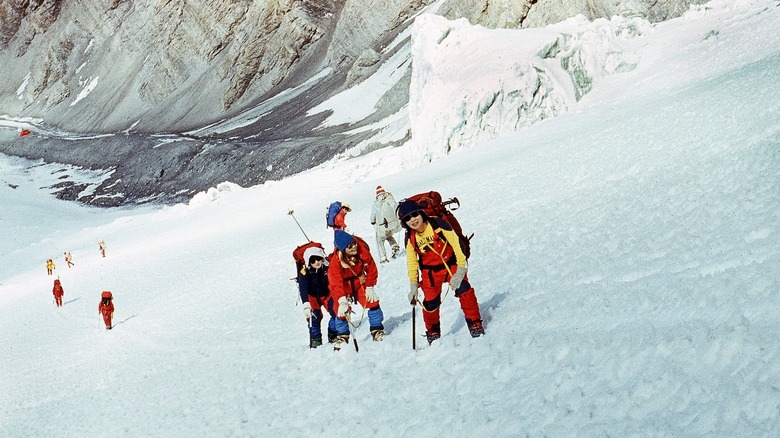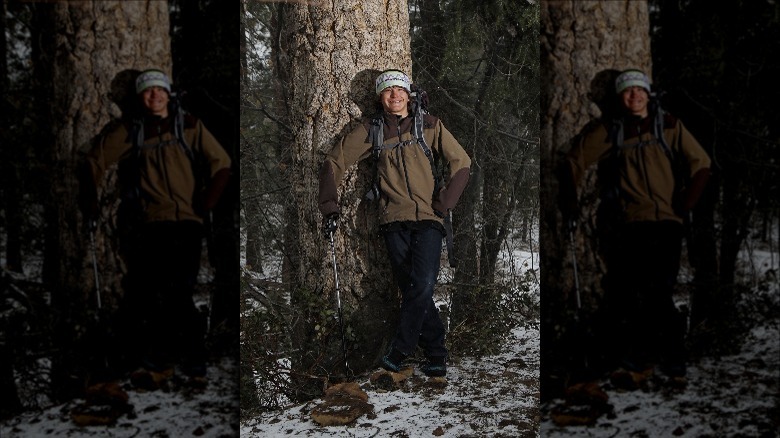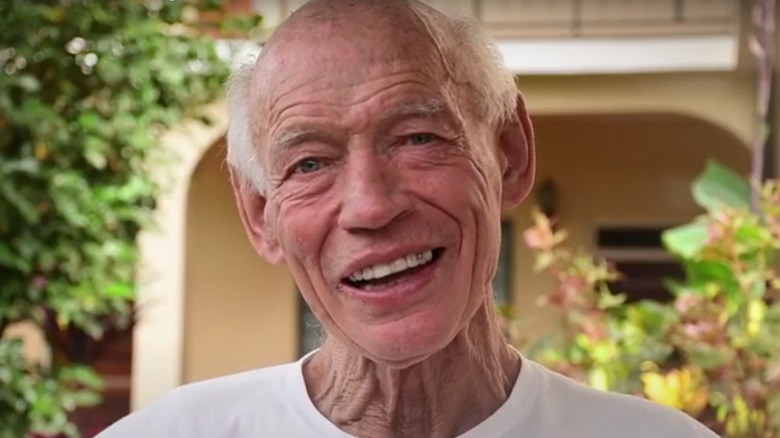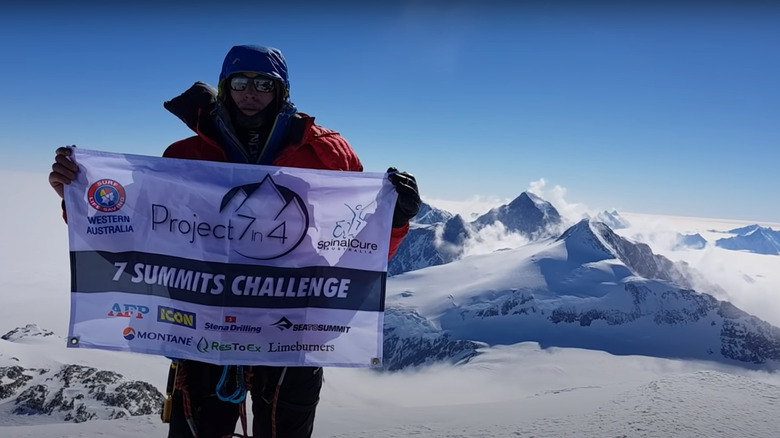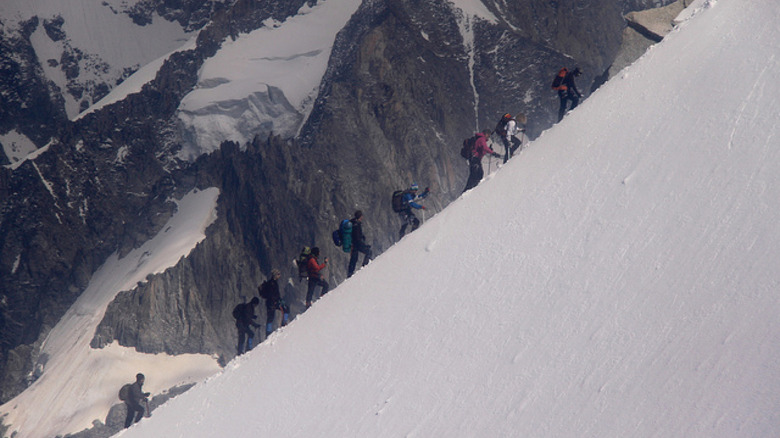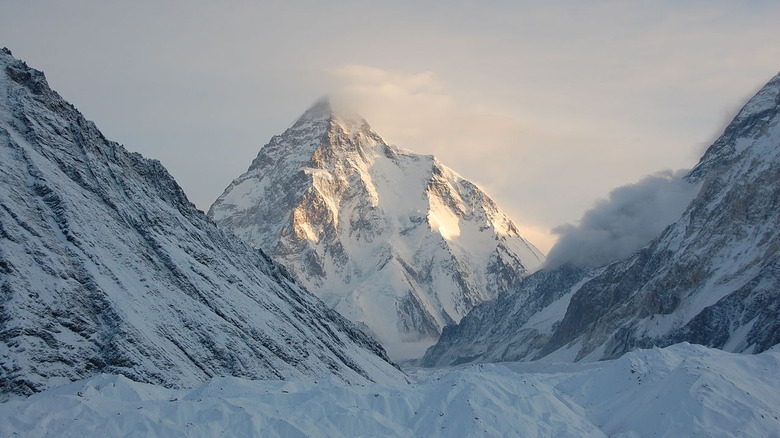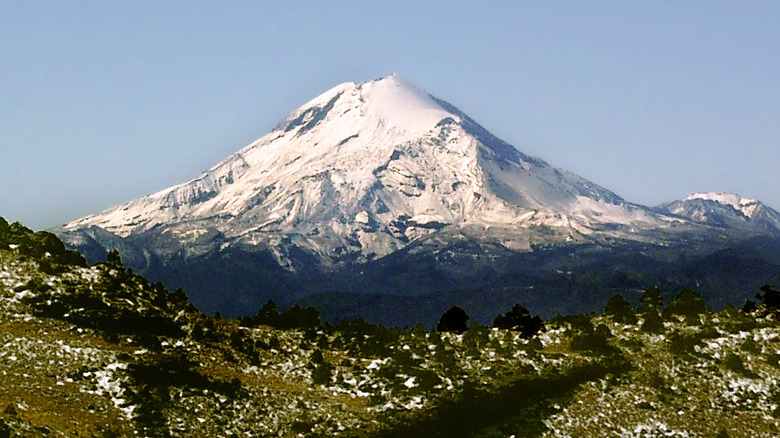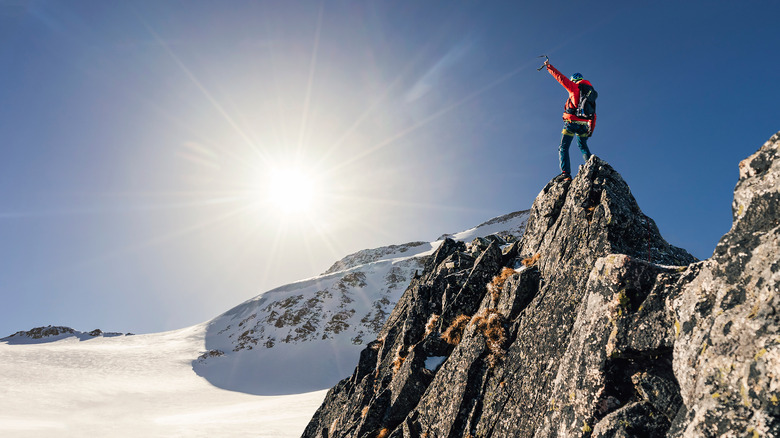The Crazy History Of The Seven Summits Mountaineering Challenge
A major challenge for any mountaineer is to summit the highest peak in the world — Mount Everest. Not only does it provide an excellent view, but it also would be a pleasant topic of conversation at any dinner party, as long as you can get over the death toll.
Now, what if you decided to take it to the next level? What if you went out to climb the highest peak on every continent on Earth? Britannica acknowledges that this feat is considered one of the pinnacles (pun intended) of mountaineering. This is the Seven Summits Mountaineering Challenge.
While the definition of the Seven Summits may seem straightforward, it has been problematic. The definition of what is or is not a continent depends on the mountaineer, resulting in different lists. For example, does Mount Kosciuszko, the highest peak in Australia proper, count as its highest peak or do you include the higher and more difficult mountains on New Guinea since they are on the same continental plate? Or since Mount Elbrus, which in many lists is the highest peak in Europe, lies on the border of Asia and Europe does it really count as being a part of Europe? The history of the Seven Summits Mountaineering Challenge, therefore, is fraught with a certain amount of confusion.
And death, too.
Early Challenges of Climbing the Seven Summits
Mountaineers have been interested in the Seven Summits since Edmund Hillary and Tenzing Norgay were the first to climb Everest in 1953 (via History). If people could get to the top of Everest, then the other peaks would be a piece of cake. Or would they?
According to the British Mountaineering Council, the American William Hackett aimed to climb all seven. His list counted Mount Blanc as the highest peak in Europe and Mount Kosciuszko for Australia. He received a permit to climb Everest in 1960, but it never materialized. The New York Times cites that there was a lack of time to organize it, and the abc of mountaineering also asserts there was a lack of funding.
The tragic consequences of alpine ambition is best seen in Naomi Uemura's story. As explained by nippon.com, Uemura was an explorer extraordinaire. In 1970, he was the first Japanese citizen to summit Mount Everest. That same year, he was the first person to ever make a solo ascent on Denali (formerly Mount McKinley). In fact, when Uemura topped Denali he had reached the top peaks on five continents (if you count Mount Blanc). All he had left were Australia and Antarctica. He next eyed the South Pole, but his trip was delayed due to the outbreak of the Falklands War. So in 1984 he returned to Denali. He made the ascent, but he vanished without a trace on the way down.
Dick Bass Sets the Standard
The first person who is commonly accepted to achieve some form of the Seven Summit Mountaineering Challenge was the American businessman Richard Bass. As described by The New York Times, he, with Frank Wells, a former president of Warner Brothers, paid professional mountaineers to assist them to climb the seven summits from 1981 to 1984. Bass later remarked their help was critical. He said, "We were smart enough to take the best with us, guys who helped dampen and allay a lot of the fear. Where you needed fixed ropes, they could put them in. Frank and I would have killed ourselves if we went out there and tried to do that kind of stuff."
Bass' list included Aconcagua (South America), Denali (North America), Everest (Asia), Elbrus (Europe), Vinson (Antarctica), Kosciusko (Australia), and Kilimanjaro (South America). Both men had the greatest difficulty with Everest, having failed to climb it twice. In one instance one of their companions, mountaineer Marty Hoey, was killed. Wells subsequently became president of the Walt Disney Company, so he called his alpine adventures off. Bass, on the other hand, tried two more times, reaching the top of Everest in April 1985.
Bass afterward penned "Seven Summits" in 1986, which popularized the Seven Summit Mountaineering Challenge. This gave rise to attempts to duplicate the feat.
But Reinhold Messner says, Now wait just one minute
Richard Bass' feat, while duly recognized, was not without critics. Chief among these was the Italian alpinist Reinhold Messner. Messner is a legend in mountaineering circles. Britannica describes his achievements, including being the first person with Peter Habeler to climb Mount Everest without oxygen in 1978, as well as making the first ever solo ascent of Everest in 1980 — also without oxygen. Messner agreed with Bass' list except for one peak. In his estimation, Mount Kosciuszko in Australia at 7,310 feet was not the highest peak in Australia. Messner considered Oceania as a part of Australia and viewed Puncak Jaya (sometimes Mount Carstensz or the Carstensz pyramid) in New Guinea at 16,024 feet to be the correct seventh summit, notes Michael Apollo of the University of Cracow. Basically, Messner, with other serious mountaineers, thought that the Bass list was just too easy.
The criticism was summated in "Alpine Journal," by mountaineer Oswald Oelz — "The Seven Summits were an opportunity for Dick Bass to demonstrate that an American businessman in excellent bodily condition, with the help of money and a good portion of luck, can achieve almost anything. In the meantime climbing the Seven Summits has become a status symbol for executives and climbers."
Reinhold Messner climbs Kosciuszko anyway
There was now interest in climbing Reinhold Messner's legitimate Seven Summits. Both Messner and others, according to one research journal, set off to do what became known as the Messner list. Interestingly, Messner, in order to cover his bases, apparently also climbed Mount Kosciuszko in Australia. As an aside, this somewhat legitimized the Richard Bass list as explained by the book "Climbing the Seven Summits." Regardless, Messner was not the first person to complete his own list. That distinction went to the Canadian alpinist Pat Morrow who finished the list on May 7, 1986. Messner completed it shortly thereafter.
The Messner list and the Bass list are the two most commonly used lists for the Seven Summits Mountaineering Challenge. In all these early attempts at the Seven Summits, credit must be given. These were difficult climbs, if not all from a technical point of view then from a logistical point of view. For example, the cost of outfitting expeditions from the Himalayas to the Antarctic were considerable.
Junko Tabei was the first woman to scale the Seven Summits
Interest in the Seven Summits Mountaineering challenge grew, and as the years passed, new types of firsts were established regularly. For example, Junko Tabei of Japan was the first woman to successfully complete the Seven Summits Mountaineering Challenge. Tabei is justly a legend in mountaineering circles. According to Adventure Journal, she broke through sexist attitudes of her time. Men refused to climb with her, and some accused her of just joining them because she was looking for a husband. In response, Tabei formed her own women's mountain climbing club. She soon set her sights on Mount Everest and made the attempt in 1975.
Fifteen women from the club went with her, with each spending about the equivalent of a year's wages to finance it. On the ascent at 9,000 feet, she was buried and knocked out by an avalanche. She survived and continued climbing. Of the party, she was the only woman to make it to the summit, thus becoming the first woman ever to climb Everest. After this feat, she turned her sights to the Seven Summits. As noted by the Guinness Book of World Records, she completed the Messner list in 1992 when she scaled Puncak Jaya.
Teenagers do the Seven Summits, Too
After these early pioneers, the Seven Summits Mountaineering Challenge has drawn so many people that all new types of records are being set. One remarkable record was set, according to the BBC, by Jordan Romero when he finished the Seven Summits by climbing the Vinson Massif in 2011. Romero, who was 15 at the time, had spent roughly a third of his life questing to finish the Seven Summits (Messner list) starting at age 9 when he climbed Mount Kilimanjaro with, as described by LiveScience, his father and his father's girlfriend.
Perhaps most astonishing was how in 2010, at age 13, he summited Mount Everest. According to the Christian Science Monitor this feat sparked off some debate as to how old one should be to even attempt such a thing. The Nepalese government had even refused to permit him to scale Everest from their side, forcing the teenager to climb the more difficult side of the mountain in Tibetan territory. Romero later published a book on his adventure, "No Summit Out of Sight." Romero's feat may now be unbreakable, in that laws on both sides of Everest have passed restricting the age of climbers to 16 in Nepal and 18 in Tibetan China.
The Oldest Seven Summits Mountaineer wants it to keep going
It may be argued that while a climber as young as Jordan Romero is remarkable, it is more remarkable when the elderly do it. Such is the case of Werner Berger. According to Inc., Berger started climbing at age 55 when he and his son went to the Everest base camp. He couldn't stop. As described by the Guinness Book of World Records, Berger had completed the Bass list at age 69 in 2007.
At the time, McGill University reported that Berger was reflective of his age and longevity, emphasizing fitness. He certainly did have stamina, since in 2013 at age 76 he climbed Puncak Jaya becoming the oldest person to satisfy the Messner list. Berger's attitude toward his mountaineering is one that embraces life. Inc. quoted him as saying, "The truth really is that if I had died after my first Denali climb, I would have still been a happy climber, because it was an awesome experience." Berger, as of 2021, still continues to climb.
The Fastest Seven Summits Ascent took less than four months
One might reasonably expect that climbers of the Seven Summits may want to savor the moment and take their time on top of these glorious mountains. However, there are some who rush it for the sake of a record or to show their resilience. According to GearJunkie, the Australian Steve Plain sustained massive injuries when a wave slammed him into a beach while swimming in 2014. He had several broken vertebrae, torn ligaments, and a contorted spinal cord. Despite being told by doctors that he was doomed to a wheelchair, he vowed to do the Seven Summits. After undergoing a heavy regimen of physical therapy, he began to climb again and began his project called 7in4. His goal was to beat the then current speed record of 126 days.
Plain decided to set this record using the Messner list, but he also threw in Mount Kosciuszko just to cover his bases. So he was in fact looking to do all eight. His plan was to do the hardest first and last — starting by climbing through the brutal conditions of the Vinson Massif in Antarctica and ending with Everest. Reuters reported that he accomplished this goal on May 14, 2018, setting a new record at 117 days.
Are the Seven Summits even worth it anymore?
Today, hundreds of people have accomplished one or another version of the Seven Summits Mountaineering Challenge. In some mountaineering circles, there is some depression that all the really historical mountaineering feats have been accomplished. One article in Alpine Journal opined, "The original reports of the first ascenders of these mountains arouse nostalgic feelings. It took them months or even years to reach their goals; their expeditions were real in the sense of the Latin word expeditio, which means travelling to foreign unknown hostile country where the outcome is uncertain. I envy Stuck, Grove, Meyer, Zurbriggen, Hillary, Harrer and all the others for their adventures which are not repeatable any more."
At the same time, it has become apparent that only those with financial resources are able to pull off the Seven Summits challenge. Rock and Ice in an editorial piece decried how the wealthy have simply dominated what was once a pristine challenge of outdoor sport. There is some truth to this. As detailed by Men's Journal, it costs roughly $60,000 to climb Everest alone between permits, gear, equipment, and hiring assistants. The Vinson Massif is slightly cheaper between $40,000 to $50,000.
Because of this, some mountaineering purists have called for harder mountaineering challenges that mirror the Seven Summits.
Is the Second Seven Summits Harder?
It seems that many mountaineers agree that the second highest peaks on each continent are harder and more dangerous than the highest peaks. Atlas and Boots details how, for example, K2 (the second highest peak in Asia) has a much higher fatality rate than Everest and how Mount Kenya (the second highest peak in Africa) is far more difficult to ascend than Mount Kilimanjaro. As pointed out by mountaineer Mark Horrell, when a peak is the second highest, it does not receive the same attention and therefore does not have the same type of infrastructure built about it. For example, Mount Logan, North America's second highest mountain, is more isolated with less supporting structures than Denali. Some, such as Puncak Trikora in Indonesia, do not even have well-documented climbing routes.
According to Climbing, Hans Kammerlander of Italy was the first person to complete the Second Seven Summits in 2012, although his peak selections were challenged. The next up was the Austrian Chris Stangl. Stangl was a mountaineer who became mired in scandal. According to Climbing, Stangl admitted to faking a climb of K2 in 2010. He came back and did it in 2012. He then officially became the first person to climb all the second seven summits in 2013. Stangl, to be thorough, also climbed all the third seven summits, which included more esoteric and harder mountains.
How about Volcanic Seven Summits?
If climbing the first, second, or third Seven Summits isn't challenging enough, what about climbing volcanoes instead? It seems that in the quest to come up with new firsts, some mountaineer conjured up just such a list. It isn't quite what you think. You won't necessarily be navigating magma flows as if you were trying to flee Pompeii.
First, two of the peaks on the list, according to explorersweb, are already on the original Seven Summits list — Elbrus and Kilimanjaro. This means you can successfully complete the original Seven Summits list and only have to pick up five more to complete the volcanic. Second, all these volcanoes are dormant, with the last eruption having taken place in 1846 at North America's highest volcano, Pico de Orizaba in Mexico. Only a handful of people have topped this challenge, starting with Italian Mario Trimeri and 16-year-old Romanian Crina Popescu in 2011. Heck, to manufacture even more challenges there is also a Volcanic Second Seven Summits list.
So if so many people have done the Seven Summits, is it hard?
It is unclear exactly how many people have finished the Seven Summits mountaineering challenge. Lists are routinely not kept up to date, but it is certain that hundreds have finished it with the current tally standing at about 500, according to NPR. So if such a number of people can complete the Seven Summits Mountaineering Challenge, is it really a big deal? The answer is mixed. Of the peaks, Everest is certainly the greatest challenge with deaths of climbers happening routinely. Other peaks, such as Vinson in Antarctica, are so remote that the trip in of itself is a challenge. However, it is ultimately the personal experience itself which calls people to the Seven Summits. One such person was David Mauro who, as quoted by NPR, stated, "What happened was each time I did one of these mountain climbs, there would be this rich lesson that would come out of it that was immediately relevant. It became this seven-year conversation between the mountains and my personal life."
While there may be greater physical challenges for mountaineers, and there are still unconquered peaks to climb, the Seven Summits Mountaineering Challenge is a statement of the fundamental human ambitions to transcend, explore, and conquer.
